Yamashiro region, Kyoto prefecture : English

Main content starts here.
National Treasure
Myokian/Taian(Oyamazaki Town)
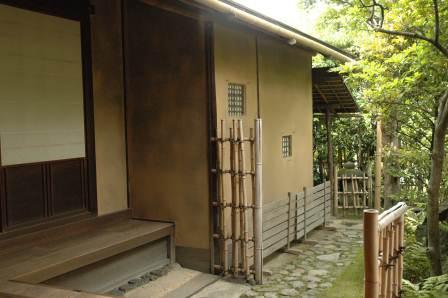
Myokian, a Zen temple of the Rinzai Sect, was established during the Muromachi Period. The Taian teahouse, one of only three in Japan designated as National Treasures, is the oldest in Japan. Said to be the creation of Sen no Rikyu, the interior of the tea room measures two tatami mats in size. Advance reservations are required to view the teahouse.
| Address | 56 Ryuko, Oyamazaki-cho, Otokuni-gun, Kyoto Postal code 618-0071 |
|---|---|
|
Inquiries |
Tel:075-956-0103 |
| Business Hours | Appointment Necessary |
| Closed | Appointment Necessary about one month before |
| Access | JR Line to "Oyamazaki",3 min walk. |
| Fee | 1,000yen |
Byodo-in Temple (Uji City)
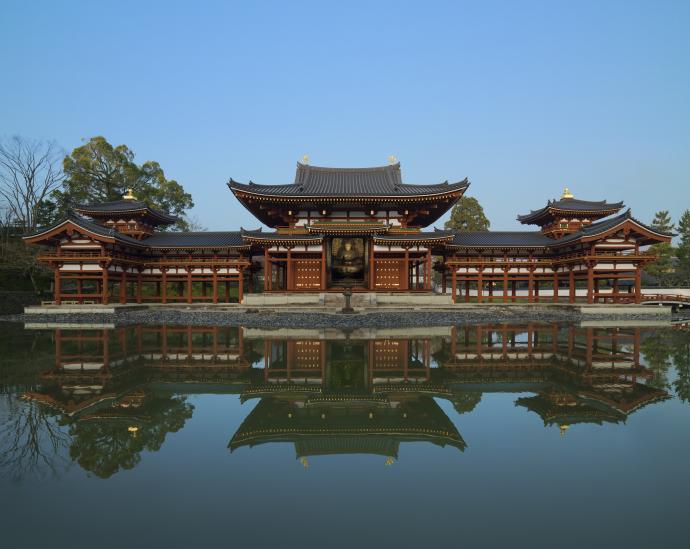
In 1052, in the late Heian period (794-1185), Fujiwara no Yorimichi, the chief advisor to the emperor in Uji, converted his father’s villa into a temple. The temple’s main Phoenix Hall (Ho-o-do) was built the following year as an Amida Buddha hall, and is comprised of the main hall, which houses the enshrined Seated Statue of Amitabha Tathagata created by sculptor Jocho, the transept of the left wing, and the tail corridor at the rear. The large roof is adorned with a pair of phoenixes, while the inside is richly decorated with dazzling floral treasures and a frontispiece. The double canopy and the bodhisattvas on clouds statues are a must see. The pond in front of the Phoenix Hall is the centrepiece of the garden, which is designated as both a Historic Site and Place of Scenic Beauty, and the whole image of the temple, the pond, the Uji River and surrounding mountains are said to represent the paradise found in the afterlife. This layout has had a profound influence on the design and layouts of other temples all over the country.
|
Visiting hours |
08:30 – 17:30 Open all year round |
|---|---|
|
Admission fee |
Garden + Museum Hoshokan: 600 yen (junior/senior high school students 400 yen; elementary school students 300 yen) *Entry into Phoenix hall costs an additional 300 yen |
|
Inquiries |
Byodo-in Temple (external link) TEL: 0774-21-2861 |
|
Address |
116 Ujirenge Uji-shi |
|
Nearest station |
10 minute walk from either Uji station, JR Nara line, or Uji station, Keihan line |
|
Car parking availability |
No parking available |
Ujigami Shrine (Uji City)
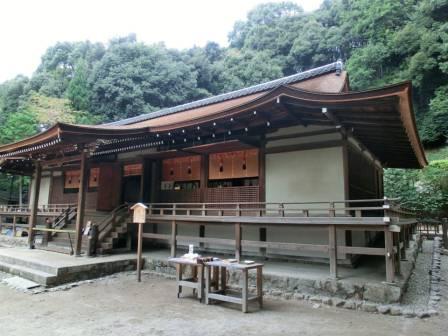
Ujigami Shrine and the neighbouring Uji Shrine were, until the Meiji period (1868 – 1912), collectively known as the Rikyukamisha. The haiden hall situated at the front of the shrine grounds dates back to the early Kamakura period (1185 – 1333) and is built in the shinden-zukuri, or Heian period palatial style. Its roof is also a beautiful example of the sugaruhafu roof style. The honden hall was built in the late Heian period (794 – 1185) as is the oldest surviving original Shinto shrine. The inner shrine is built in a certain style, whereby the three structures are lined side-by-side, and share a common roof covering. The shrine grounds also encompass Kasuga Shrine, a smaller auxiliary shrine, as well as Kiriharasui spring, one of the 7 famous natural springs around Uji.
|
Inquiries |
TEL: 0774-21-4634 |
|---|---|
|
Address |
54 Uji-yamada, Uji-shi |
|
Nearest station |
20 minute walk from Uji station, JR Nara line; 10 minute walk from Uji station, Keihan line |
|
Car parking availability |
No parking available |
Omido-Kannon-ji Temple (Kyotanabe City)
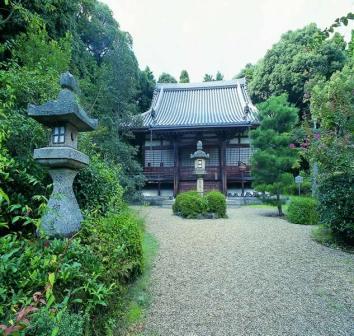
This temple was established by High Priest Gi-in under the instruction of Emperor Tenmu. After a fire in the year 1437, 13 temple buildings and 20 priest quarter buildings were destroyed, and the current Omido hall was the only building that was rebuilt. Today, it consists of the main hall and a garden, surrounded by lush greenery and hills, making it a beautiful place for a walk in the spring, when visitors are surrounded by cherry tree and rape blossoms, and in the autumn, when the maple trees burst forth with colour.
|
National treasures |
11-faced standing Kannon Buddha statue |
|---|---|
|
Visiting hours |
09:00 – 17:00 |
|
Admission fee |
400 yen |
|
Inquiries |
TEL: 0774-62-0668 |
|
Address |
13 Shimodai-mon, Fugen-ji, Kyotanabe-shi |
|
Nearest station |
From Miyamaki station on either JR Gakkentoshi line or Kintetsu Kyoto line, take Nara Kotsu bus to Fugenji bus stop |
|
Car parking availability |
Free of charge |
Joruri-ji Temple (Kizugawa City)
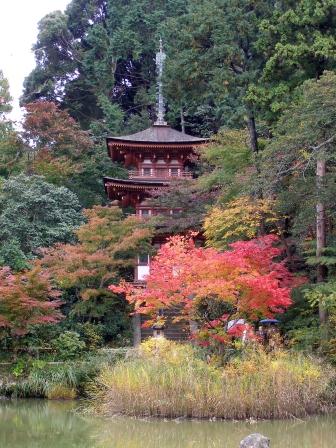
This temple is said to have been established by the priest Gyogi under instruction from the emperor Shomu during the Nara period (710-794), and the 9 statues of the Amida Buddha were enshrined in the main hall at the end of the Heian period (794-1185). The three-storied pagoda and the garden respect the beauty of each season, and are designated as a Place of Scenic Beauty and a Historic Site.
Three-storied Pagoda at Joruri-ji Temple
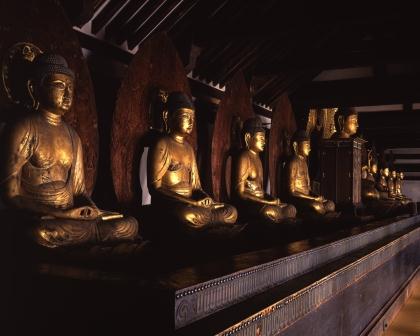 9 Statues of the Amida Buddha
9 Statues of the Amida Buddha
|
National treasures |
Main temple Three-storied pagoda 9 statues of the Amida Buddha Standing statues of the 4 Devas |
|---|---|
|
Visiting hours |
09:00 – 17:00 (10:00 – 16:00 from December to February) Open all year |
|
Admission fee |
400 yen |
|
Inquiries |
Joruri-ji Temple (external link) TEL: 0774-21-2861 |
|
Address |
40 Kosatsuba, Kamo-cho, Kizugawa-shi |
|
Nearest station |
70 minute walk from Kamo station, JR Yamatoji line; or Take express bus from JR or Kintetsu Nara stations, get off at Joruri-ji Temple |
|
Car parking availability |
300 yen |
Kaijusen-ji Temple (Kizugawa City)
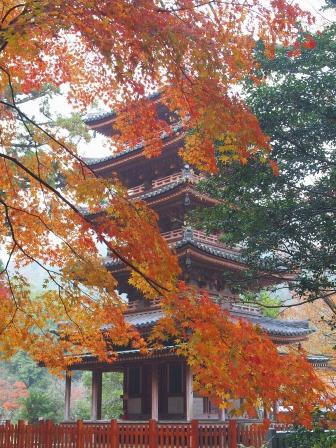
This temple is said to have been established by high priest Roben of Todai-ji Temple in the year 735, at the request of the emperor Shomu. The five-storied pagoda built next to the main hall, which houses an 11-faced statue of the Kannon Buddha (Important Cultural Property), is said to be a masterpiece of Kamakura-era architecture (1185 – 1333).
|
National treasures |
Five-storied pagoda |
|---|---|
|
Visiting hours |
09:00 – 16:30 |
|
Admission fee |
400 yen |
|
Inquiries |
Kaijusen-ji Temple (external link) TEL: 0774-76-2256 |
|
Address |
20 Kaijusen, Reihei, Kamo-cho, Kizugawa-shi |
|
Nearest station |
60 minute walk from Kamo station, JR Yamatoji line; or Take express bus from JR or Kintetsu Nara stations, get off at Joruri-ji Temple |
|
Car parking availability |
Available |
Kaniman-ji Temple (Kizugawa City)
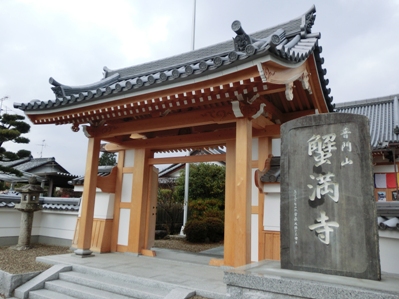
This temple is famous for appearing in the story of “The Crab Repaying the Favour” as part of the Konjaku Monogatarishu collection of stories. The sedentary (2.403m, 2 tonne bronze) statue of the sage of the Sakyas is a national treasure and is thought to date back to before the Nara period (710 – 794).
“The Crab Repaying the Favour” tells the story of a young girl who strongly believed in the Kannon Buddha (of mercy) and one day saved the life of a crab. Later, when the young girl was being troubled by a marriage proposal from a snake, the crab repaid the favour the girl had previously extended to her by killing the snake.
|
National treasures |
Sedentary statue of the sage of the Sakyas |
|---|---|
|
Visiting hours |
08:00 – 16:00 |
|
Admission fee |
500 yen |
|
Inquiries |
TEL: 0774-86-2577 |
|
Address |
36 Kabatahama, Yamashiro-cho, Kizugawa-shi |
|
Nearest station |
20 minute walk from Tanakura station, JR Nara line |
|
Car parking availability |
Free of charge |